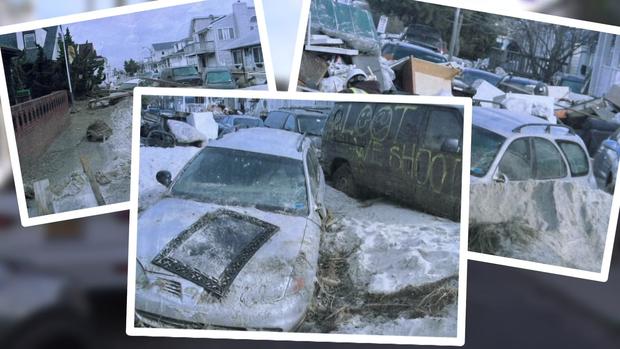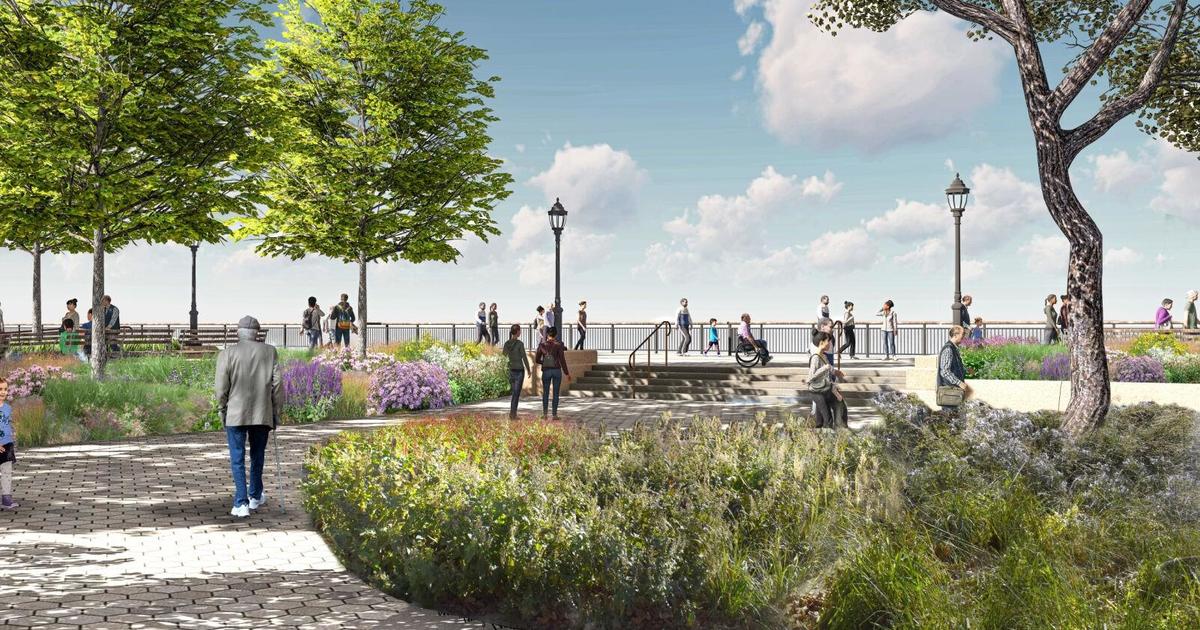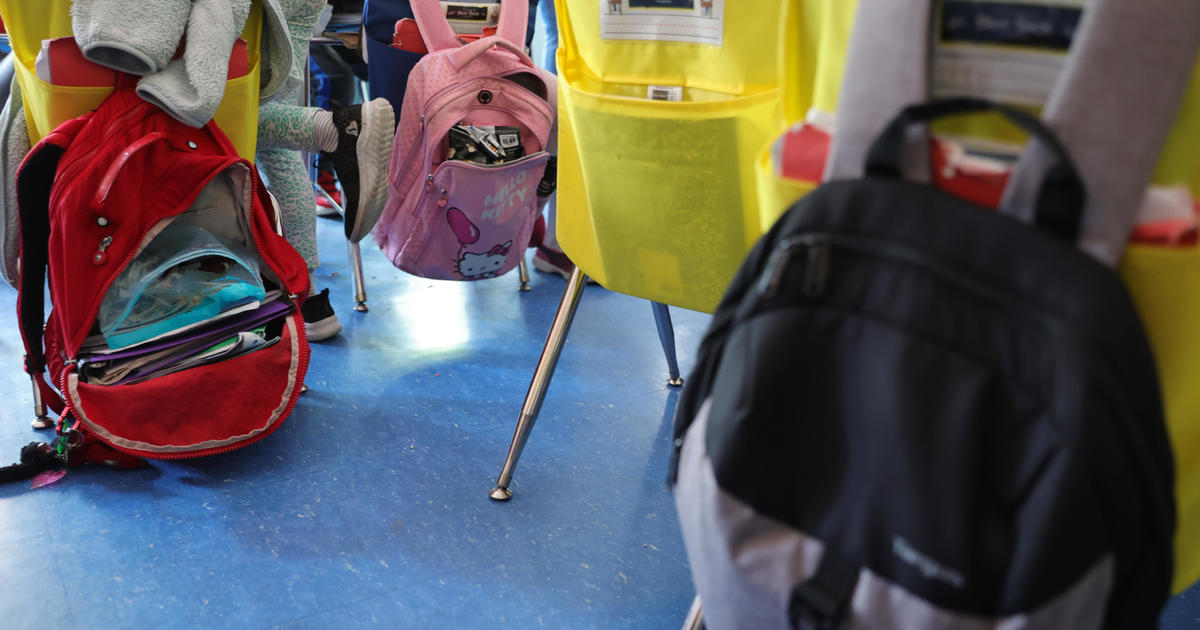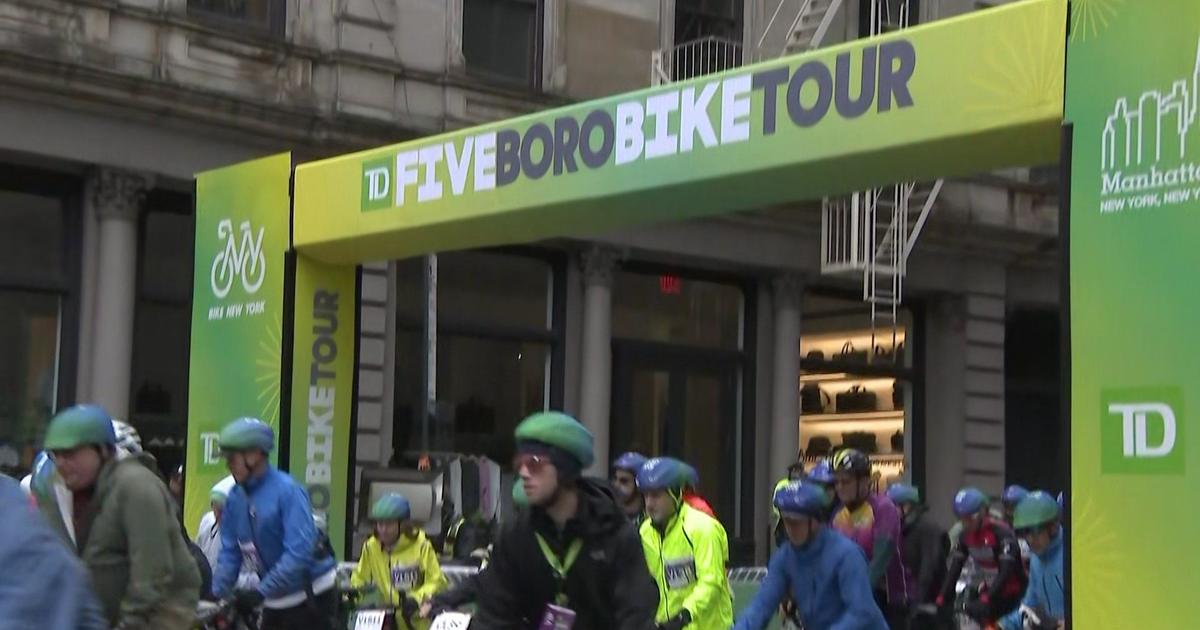"Yeah, we got clobbered, but here we are today": Long Beach residents reflect on surviving Superstorm Sandy, 10 years later
LONG BEACH, N.Y. -- This week marks the 10th anniversary of Superstorm Sandy.
For a decade, we've been reporting on a recovery that took longer than anyone could have imagined back in October of 2012.
On Long Island, CBS2's Carolyn Gusoff was one of the first to bring us startling images of destruction from Long Beach. She recently reconnected with some of the very same people she spoke to then to find out where and how they are now.
"The phone went dead, the streetlight went dead and next thing I know, it's like a Brian De Palma movie. I see water start coming up ... I see cars starting to float," Long Beach resident Stephen Shaw said.
The destruction Superstorm Sandy unleashed on Long Beach was at first an other-worldly sight. The barrier island suddenly looked like a horror film.
On Nov. 2, 2012, Gusoff reported from a Long Beach street that was filled with enough sand to bury cars.
A tidal surge submerged the city by the sea, deluged from all directions.
"It was like a raging river ... Coming from the ocean, coming from this way, this way," Shaw said.
It buried streets in what seemed like a tsunami of sand, flooding nearly every home and business, wiping out power, heat and sewer systems.
"It was like an episode of 'Twilight Zone,'" Long Beach resident John McCauley said in 2012. "All of a sudden, it sounded like an explosion and the dune came shooting down the street like a freight train."
Ten years later, McCauley counts Sandy's surge as the indelible moment in his 83 years.
"That was like the main event. Wouldn't want to go through that again," he says.
His photos of Michigan Street captured a surreal scene.
"You realize it could happen again. Every time you get hurricanes warnings, in the back of your head, you're saying, who knows?" McCauley said.
The McCauleys spent a winter with no heat. Others spent years with no homes, but they rolled up their sleeves and got to work.
"They can't go to work now, they have no cars, they have no food, and they have to leave their house. Where are they going to go?" Kevin McAdams said back in 2012.
Among his own losses -- a new car.
"Brand new, 200 miles. Nobody's hurt, though, that's all that matters, you know," he said at the time.
Now, McAdams is still touched by the help that also flooded Long Beach.
"Help you dig out your house, get your water heater, have you come in and eat a hot meal. Just amazing to see the real comradery of our community," he said.
But that spirit got choked by reams of red tape.
"We can't rely upon insurance. We can't rely upon the banks. We can't rely upon the government," one woman said in 2013.
"Frustrating, heart-wrenching, depressing," another woman said.
Rebuilding took three-and-a-half years for the Corbett family, draining retirement savings, navigating grants and insurance.
"It was such a struggle to get home," Kathy Corbett said.
"Maddening. You pay and you expect that these things are going to be there for you and not have to fight tooth-and-nail for what you've paid for," Bill Corbett said.
"We are still paying the price," Kathy Corbett said.
Much of the frustration aimed at New York Rising.
"We were born a year after the storm and then had to create this multibillion dollar agency out of nothing. It took some time," said Jon Kaiman, former special advisor to the governor for New York Rising.
It also took $6 billion to help rebuild 50,000 Long Island homes, thousands of them elevated. The Long Beach boardwalk was rebuilt to never buckle again. Shore lines, sewer and power systems were hardened.
Kaiman, the face of the agency, says it got a crisis under control.
"The government didn't create the storm. We didn't create the crisis, and yet people ... feel that somehow it's those in power's fault. We failed them because we didn't get stuff to them quick enough," he said. "But in fairness ... we knew people were in distress. We had to learn as we went."
Others learned that for all it destroyed, the storm had a silver lining. Businesses came back better.
"There was a lot of volunteering and everything. It really brought the whole community together, and it stayed that way, which is great, you know. Triumph out of tragedy," said Jamie Lynch, with the Long Beach Chamber of Commerce.
Shaw's house is now higher, safer.
"It was like a punch to the stomach where you were down on your knees ... Get up, get up and you have to do it," he said.
McAdams, now a Floridian, just survived Hurricane Ian.
"To be able to give somebody a hug now down here that has lost their houses and say it's gonna be OK, I've been there," he said.
The Corbetts are battle-worn but not bitter.
"Our kids saw the resilience that we had together and that translated to them becoming resilient adults," Kathy Corbett said.
"Persevere, that's all you can say," Bill Corbett said. "Yeah, we got clobbered on October 29th, 2012, but here we are today."
Badly bruised, but never broken.






